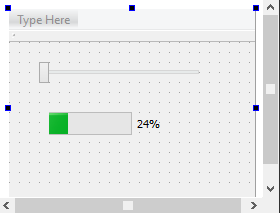
I found out today that Qt’s slots/signals architecture is even better than I thought. Normally, developers connect widget signals to widget slots to be notified of events. Today I discovered that signals can actually be connected to other signals, which saved me from writing some really stupid code…
In Qt v4.5 and earlier: No, the order is undefined as can be seen in the documentation here: If several slots are connected to one signal, the slots will be executed one after the other, in an arbitrary order, when the signal is emitted. Edit: From version 4.6 onwards this is no longer true. Now the slots will run in the order they are connected. QtCore.SIGNAL and QtCore.SLOT macros allow Python to interface with Qt signal and slot delivery mechanisms. This is the old way of using signals and slots. The example below uses the well known clicked signal from a QPushButton. The connect method has a non python-friendly syntax. Hi, I have a QTabWidget with many page. When the user is clicking on the first tab, I would like to update informations. Moreover, I don't want to use a thread for it, to not overthread my applcation. Signals and slots are used for communication between objects. The signals and slots mechanism is a central feature of Qt. In GUI programming, when we change one widget, we often want another widget to be notified. More generally, we want objects of any kind to be able to communicate with one another. Shouldn't that be a signal from the button? Delete mn; You are deleting the window here, therefore the slot is not called. You should try the connect code in a Qt Widgets Application (File New File or Project Applications Qt Widgets Application) created by Qt Creator.
Qt Slots Signals Tutorial
This may seem weird, but consider this scenario. You have a custom widget, called MyWidget, that has a signal, somethingClicked(), which is emitted when a user clicks, uh, something. But now you want to add a QPopupMenu as a right-click context menu, that causes the somethingClicked() signal to be emitted also. It turns out there’s a hard way and an easy way to do this.
First, the hard way:
Qt Signal Slot Parameter
1. Add a new slot called emitSomethingClickedSlot() that looks like this:
2. Then, connect the QPopupMenu‘s menu item to this slot, like so:
That sucks. We just created a slot whose sole purpose is to turn around and emit a signal. What a waste of editor space. It would have been smarter to connect the menu item’s signal directly to the somethingClicked() signal.
Qt Slot Signal
Here’s the easy way:
Qt Signal Slot Performance
Now that’s concise. Sometimes it pays to connect signals to signals.
